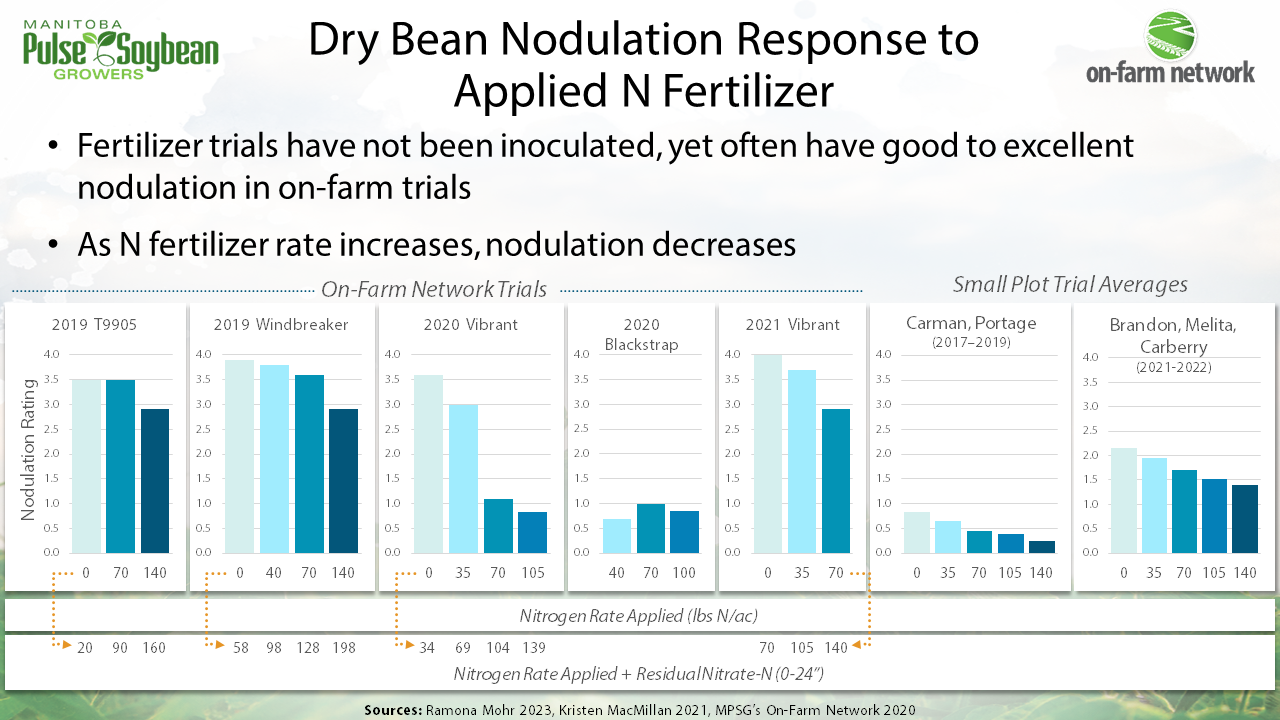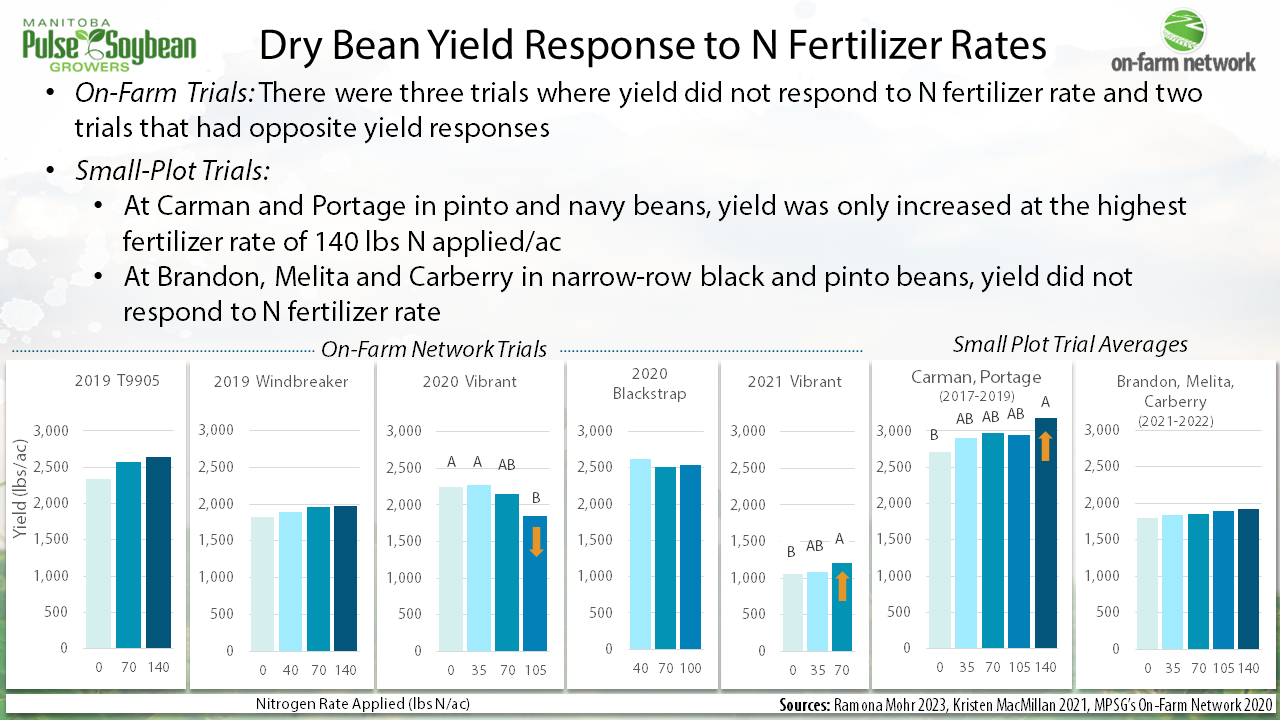Dry beans are relatively poor N-fixers, producing less than 45% of their N requirement. Nitrogen uptake rates in dry beans range from 3.9-4.7 lbs N/cwt of seed, meaning a 2000 lbs/ac dry bean crop would require 78-90 lbs N/ac. This nitrogen may come from a combination of residual soil N, biological N fixation and N fertilizer.
As nitrogen rate applied increases, nodulation decreases since plants become ‘lazy’ and rely on soil nitrogen alone. In 4 out of 5 on-farm trials to-date, good to excellent nodulation was found to occur when N rates applied were below 70 lbs N/ac. In small-plot trials, nodulation has generally been less than on-farm.

On-farm, yield response to nitrogen rate has been inconsistent. At three trials, there was no yield response to different N rates and at two trials there were opposite responses. At one, the highest rate of N (140 lbs N/ac applied) reduced yield, while at another, the highest rate of N applied (70 lbs N/ac) increased yield. In the first scenario, yield was reduced due to prolonged vegetative growth and delayed maturity. The second scenario occurred in a drought year, where the contribution of mineralized-N was expected to have played less of a role, meaning the crop relied more heavily on applied fertilizer-N.
In small-plot trials at Carman and Portage (2017-2019), yield was increased with the highest rate of N fertilizer (140 lbs N/ac applied). When considering the return on investment, it was statistically the same for all rates of N application, meaning the economic optimum rate was to not apply any N fertilizer at all.
In more recent small-plot trials at Brandon, Melita and Carberry (2021-2022) on narrow-row black and pinto beans, there was no response to different N fertilizer rates at 9 out of 10 site-years. Black bean yield tended to increase with increasing N rates, but only significantly with uninoculated beans at Melita in 2022. At Melita in 2022, black and pinto bean nodulation and yield (+390 lbs/ac) were improved with inoculant.

Small-plot research has also investigated dry bean inoculants at Carman and Melita from 2019-2021. Of product options available, N Charge improved yield and nodulation at Melita in 2020 and 2021.

- Full Research Report: Nitrogen and Phosphorus Management for Black and Pinto Beans in Southwestern Manitoba (2021-2022) →
- Optimizing Nitrogen Rates for Pinto and Navy Beans (Small-plot Trials at Carman, Portage 2017-19) →
- On-Farm Evaluation of Nitrogen Rates in Dry Beans →
- Evaluating Dry Bean Inoculants →
Research conducted by Dr. Ramona Mohr, AAFC-Brandon (2021-2022), Kristen MacMillan, MPSG’s Agronomist-in-Residence, University of Manitoba (2017-2019) and the On-Farm Network (2019-2021).
Build a Bean Nitrogen Budget to Inform Your N Management Decisions:
- Set your yield goal (e.g., 2000 lbs)
- Calculate nitrogen uptake (multiply yield goal by 4.5 lbs/cwt = 90 lbs N)
- Account for soil residual N (0-24″) (e.g., soil N = 40 lbs N)
- Do you check nodulation in dry beans? (If no, skip to #6 and adopt as part of your scouting routine in 2023)
- Were your previous dry bean crops nodulated? (If yes, give a 40% N credit for biological N fixation by multiplying N uptake in #2 by 0.40 = 36 lbs N)
- Is your soil pH greater than 6.0? (If no, nodulation and N fixation capacity may be reduced and you should not rely on an N credit from #5)
- From N uptake (#2), subtract residual soil N (#3) and N credit (#5). This is your remaining N requirement (e.g., 90 – 40 – 36 = 14 lbs N/ac)
- If <20 lbs N/ac, N may be supplied through mineralization and deep N
- If >20 lbs N/ac, apply as fertilizer N
MacMillan 2023 Working Draft
In 2023, MPSG’s On-Farm Network has five trials planned to investigate dry bean nitrogen fertility on-farm. One black bean nitrogen trial near Deloraine is comparing 0, 35, 70 and 100 lbs N/ac fertilizer rates and four dry bean inoculant trials are planned in central and western Manitoba that will evaluate a liquid inoculant product vs. untreated dry beans. Stay tuned for effects on nodulation, lowest pod heights and yield!

